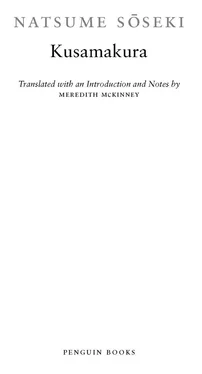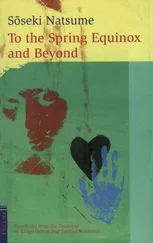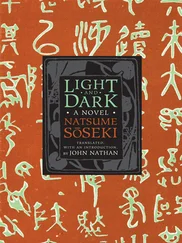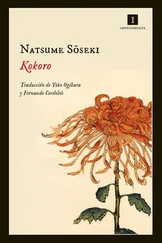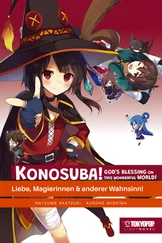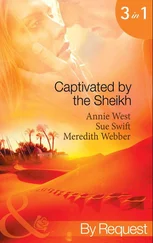Natsume Soseki - Kusamakura
Здесь есть возможность читать онлайн «Natsume Soseki - Kusamakura» весь текст электронной книги совершенно бесплатно (целиком полную версию без сокращений). В некоторых случаях можно слушать аудио, скачать через торрент в формате fb2 и присутствует краткое содержание. Жанр: Старинная литература, на английском языке. Описание произведения, (предисловие) а так же отзывы посетителей доступны на портале библиотеки ЛибКат.
- Название:Kusamakura
- Автор:
- Жанр:
- Год:неизвестен
- ISBN:нет данных
- Рейтинг книги:4 / 5. Голосов: 1
-
Избранное:Добавить в избранное
- Отзывы:
-
Ваша оценка:
- 80
- 1
- 2
- 3
- 4
- 5
Kusamakura: краткое содержание, описание и аннотация
Предлагаем к чтению аннотацию, описание, краткое содержание или предисловие (зависит от того, что написал сам автор книги «Kusamakura»). Если вы не нашли необходимую информацию о книге — напишите в комментариях, мы постараемся отыскать её.
Kusamakura — читать онлайн бесплатно полную книгу (весь текст) целиком
Ниже представлен текст книги, разбитый по страницам. Система сохранения места последней прочитанной страницы, позволяет с удобством читать онлайн бесплатно книгу «Kusamakura», без необходимости каждый раз заново искать на чём Вы остановились. Поставьте закладку, и сможете в любой момент перейти на страницу, на которой закончили чтение.
Интервал:
Закладка:
“That’s it! That’s it! That’s what I need for the picture!†I murmur, patting her on the shoulder. At last, with this moment, the canvas within my own heart has found its ful and final form.
Notes
CHAPTER 1
1 . By my eastern hedge: A verse from the poem “Drinking Wine,†by the Chinese poet Tao Yuanming (365-427), a work famous for extol ing the natural world and the calm heart divorced from the troubles of human life.
2 . Seated alone: A verse from the poem “House in the Bamboo Vil age†by the Chinese poet Wang Wei (699-759).
3 . Hototogisu or Konjikiyasha: Hototogisu, written by Soseki’s contemporary Tokutomi Roka (1868-1927), depicts the tragedy of a tubercular woman separated from her beloved husband by her feudalistic family. Konjikiyasha, by another contemporary, Ozaki Koyo (1867-1903), also depicts the sorrows of love. Both novels were immensely popular.
4 . no more do they . . . peace and tranquillity: In Chinese legend a fisherman takes his boat upstream and wanders into a grove of flowering plums. There he discovers the tranquil realm of the Taoist sages, which has no contact with the mundane world.
5 . Shichikiochi or Sumidagawa: Shichikiochi is an anonymous Noh play that dramatizes the story of a loyal retainer prepared to sacrifice his child to save his master. The Noh play Sumidagawa, by Zeami (c.1364-c.1443), portrays a woman crazed by grief at the abduction of her child; she travels to the distant river Sumida in search of him.
6 . Basho . . . composed a haiku on it: Basho (1644-94), the famous Edo-period haiku poet, wrote this haiku: “Plagued by fleas and lice—/and here is my horse peeing/right by the pil ow.â€
7 . haori: A haori is a short coat worn over Japanese dress.
CHAPTER 2
1 . a Hosho School production of the Noh play Takasago: Hosho, one of the five schools of Noh performance, had its theater in the Kanda district of Tokyo. Takasago, by Zeami, is one of the most famous Noh plays. Its protagonists are an old couple who are the spirits of two pine trees.
2 . bush warblers: These birds have a sweet cal that poetical y evokes spring.
3 . the mountain crone of Rosetsu’s painting: A famous painting by the Edo-period painter Nagasawa Rosetsu (1754-99) depicts the mythic wild-haired old woman of the mountains ( yamamba ).
4 . the war: The Russo-Japanese War of 1904-5.
5 . in Izen’s ears: Hirose Izen (1652?-1711) was a disciple of the haiku poet Basho. He spent much time on journeys composing.
6 . Suzuka’s far pass: Suzuka Mountain is on the border between present-day Mie and Shiga prefectures. The Suzuka Pass was renowned as a difficult place on the old Tokaido road between Kyoto and Edo (Tokyo) and often appeared in travel poems.
7 . it is not in fact my own poem: Soseki’s friend the poet Masaoka Shiki (1867-1902) wrote a haiku that differs in only one word.
8 . the takashimada style: an elaborate high coiffure worn by a bride.
9 . Ophelia in Millais’s painting: The English painter John Everett Mil ais (1829-96), in his famous Ophelia, depicted her floating down a river among flowers. Although Soseki describes the hands as folded, they are not so in the painting.
10 . As the autumn’s dew . . . this brief world: A poem found in the ancient poetry col ection Manyoshu (mid-eighth century) was said to be composed by a girl torn between two lovers. The legend told here is a local variation loosely based on this story.
11 . the magic feather cloak . . . demand that I return it: In the Noh play Hagoromo ( The Feather Cloak ), based on a folk legend, a fisherman finds an angel’s feather cloak cast aside on a beach while she bathes, but he returns it to her when she pleads that she cannot fly back to heaven without it.
CHAPTER 3
1 . Boshu province: In the southern part of present-day Chiba prefecture.
2 . “Bamboo shadows . . .â€: This quotation comes from a wel -known col ection of epigrammatic sayings, Taigentan, by sixteenth-century writer Hong Zieheng.
3 . Kosen . . . Mokuan: These seventeenth-century priests of the Obaku sect were renowned for their cal igraphy.
4 . Jakuchu: Ito Jakuchu (1716-1800) was famous for his paintings of creatures and plants.
5 an Okyo gives us the beauty of a ghost: Maruyama Okyo (1733-95) famously painted the ghost of a woman in diaphanous robes.
6 . Salvator Rosa: Rosa (1615-73) was an artist and poet who specialized in dramatic scenes.
7 . too many season words: A haiku must have one word associated with a season. “Blossom†and “hazy†are both season words for spring.
8 . Inari’s fox god: The Inari god is often represented by its guardian foxes. The fox is traditional y reputed to be a shape-changer, often taking the form of a woman.
9 . The fierce sculptures . . . Hokusai: Unkei (c.1148-1223) was a Buddhist sculptor. His sculptures of guardian gods at the Nara temples of Todaiji and Kofukuji are among his greatest works. Hokusai (1760-1849) was a famous artist of the ukiyo-e style. His cartoon sketches of everyday life are ful of movement.
CHAPTER 4
1 . Hakuin’s sermons . . . The Tales of Ise: Hakuin (1685-1768) is one of the most famous Japanese Zen masters. The Tales of Ise (c.877-c.940) is among the earliest classic works of Japanese literature.
2 . Young Yoshitsune . . . under the hazed moon: According to legend, the folk hero Minamoto Yoshitsune (1159-89) as a youth disguised himself as a woman to make a surprise attack on the great warrior Benkei.
3 . “vast empty mountains, no one to be seenâ€: This is the first line of a poem in praise of the hermit’s life, by Wang Wei (699-759), titled “Deer Park.â€
4 . “Willow Branch†Kannon bodhisattva: Kannon, bodhisattva of mercy, is sometimes depicted holding a wil ow branch, symbolizing her ability to bend and hear al prayers.
5 . “the eye is the finest thing in the human formâ€: A quotation from Confucius. The eye is considered good because it unfailingly reveals a person’s good or evil nature.
6 . Sadder . . . from my sight: This poem is contained in The Shaving of Shagpat: An Arabian Entertainment, a novel by the British novelist George Meredith (1828-1909). The two lines below continue this poem.
7 . Rikyu: Sen Rikyu (1522-91) first refined the rituals surrounding the drinking of whisked green tea, which subsequently developed into the modern tea ceremony.
8 . as the famous haiku has it: This passage contains quotations from two haiku. The first is by Kikaku (1661-1707): “The bush warbler/flings his body upside down/with his first song of spring.†The second is by Yosa Buson (1716-83): “The bush warbler / oh how he sings / smal mouth open wide!â€
CHAPTER 5
1 . Fukurokuju: One of the seven “gods of fortune,†of Chinese origin. Fukurokuju is characterized by a very elongated head. Childless couples could pray to a chosen deity in hopes of receiving the gift of a child from him.
2 . Anglo-Japanese Alliance: In 1902 England and Japan drew up a military al iance. It was celebrated in Japan by the issue of sets of tiny crossed flags of the two nations.
Читать дальшеИнтервал:
Закладка:
Похожие книги на «Kusamakura»
Представляем Вашему вниманию похожие книги на «Kusamakura» списком для выбора. Мы отобрали схожую по названию и смыслу литературу в надежде предоставить читателям больше вариантов отыскать новые, интересные, ещё непрочитанные произведения.
Обсуждение, отзывы о книге «Kusamakura» и просто собственные мнения читателей. Оставьте ваши комментарии, напишите, что Вы думаете о произведении, его смысле или главных героях. Укажите что конкретно понравилось, а что нет, и почему Вы так считаете.
